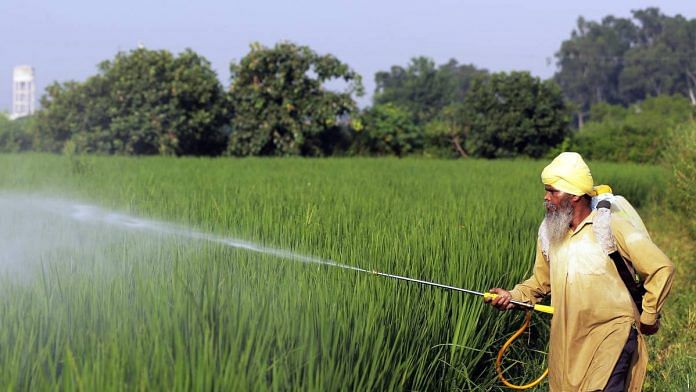New Delhi: A handful of states in northern India corner most of the central subsidies and transfers to farmers, finds a new paper co-authored by former chief economic advisor Arvind Subramanian.
Titled ‘Agricultural Federalism: New Facts, Constitutional Vision’, the paper, published in Economic and Political Weekly on 3 September proposes a radical reform agenda, including putting states in charge of agriculture.
The study argues that state governments should provide tailored incentives and subsidies to their farmers while the central government should focus on research and risk mitigation to deal with adverse climate events.
The study also mentions “attribution stakes” — or credit wars over government schemes — as another affliction assailing Indian agriculture.
Besides Subramanian, the paper was co-authored by Shoumitro Chatterjee, Devesh Kapur, and Pradyut Sekhsaria.
The study found that central subsidies and transfers on five different heads — procurement from farmers at support prices, fertiliser subsidies, direct income transfers, cost of maintaining food stocks, and payments towards states taxes on farm output (for procurement at support prices) — amounted to about 1-1.2 per cent of Gross Domestic Product (GDP) in 2019-20.
But, the distribution of funds was skewed towards a handful of states. For instance, central transfers and subsidies translated into an average benefit of Rs 18,000-20,000 per agricultural household, on average for the entire country. In contrast, a farm household in Punjab received about Rs 1.2-1.5 lakh — several times the national average.
The average annual transfers to farm households varied from Rs 52,000-65,000 in Haryana and Rs 29,000-32,000 in Andhra Pradesh to just Rs 14,000 in Bihar and less than Rs 7,000 in West Bengal.
In absolute terms, Punjab and Uttar Pradesh were major beneficiaries but in terms of the average transfer per household, Punjab and Haryana dwarfed other states. More so when compared to eastern states like Bihar and West Bengal.
Going by the constitutional mandate that makes agriculture a state subject, the authors suggested that states should have both the freedom and responsibility to implement schemes to incentivise and protect farmers. States could undertake procurement, crop insurance, and transfers but the union government would not finance these.
“In the longer run, the aim should be to restrict the role of the union government to finance better nutrition (by continuing with food subsidies for consumers) without distorting agriculture and production choices,” the paper noted.
Also Read: What’s fortified rice, why is Modi govt pushing it & why some experts aren’t excited
Credit wars
The authors admitted that globally as well as in India, “withdrawing entitlements is fiendishly difficult” and Indian politics has increasingly become susceptible to “attribution stakes” — that is, politicians wanting to take credit for schemes they roll out and the benefits that flow from them.
“Even the manner in which PM-Kisan (direct cash assistance to farmers) came about — as the union government’s response to direct transfers schemes in agriculture by Telangana and Odisha— reflected the fear that credit for helping farmers would be appropriated by state governments,” the authors wrote.
Similarly, an anxious West Bengal refused to implement PM-Kisan to not let the Centre take credit for helping farmers. “The attribution stakes are caught in this ever-expanding cycle.”
The paper said that “agriculture is stuck in a bad status quo but one that is a sort of political equilibrium… it will require a big dose of cooperative federalism… with transitional assistance for states as subsidies and transfers are gradually withdrawn.”
The authors further stated that states need to experiment with reforms and also put their money where their mouth is. For instance, West Bengal’s recent budget saw a sharp fall in capital outlays on agriculture which “illustrates the forked tongue with which states have treated agriculture”.
Punjab, the paper noted, is a “rare and tragic example of agricultural success not facilitating broader structural transformation, in part because of the large subsidies from the union that have tended to entrench the inefficient status quo. One could say Punjab has been afflicted by a kind of aid curse.”
(Edited by Uttara Ramaswamy)
Also Read: Old schemes, now with ‘PM’ branding — what is govt’s ‘One Nation One Fertiliser’ initiative



